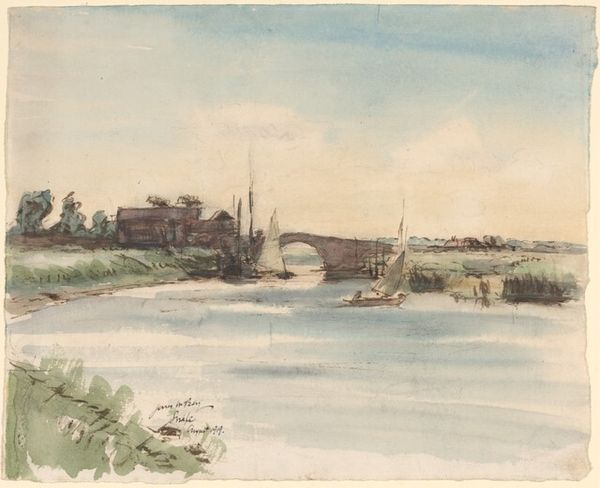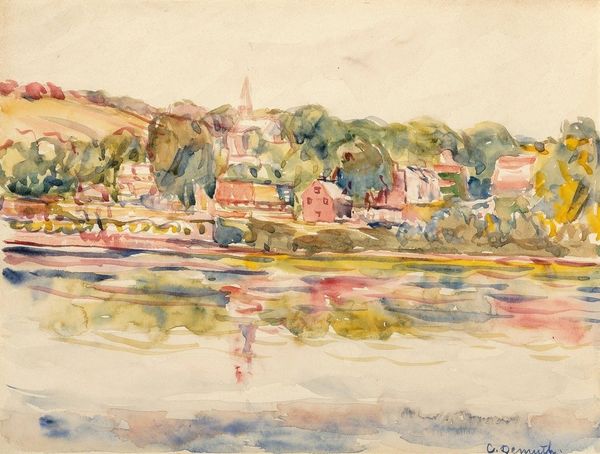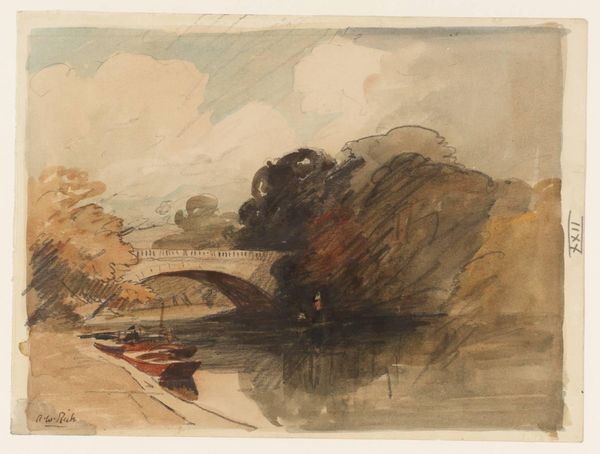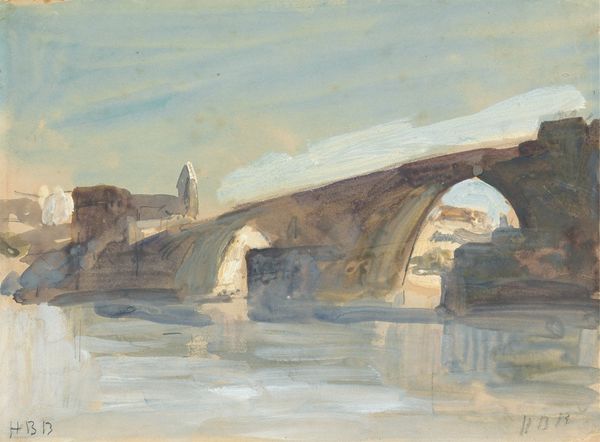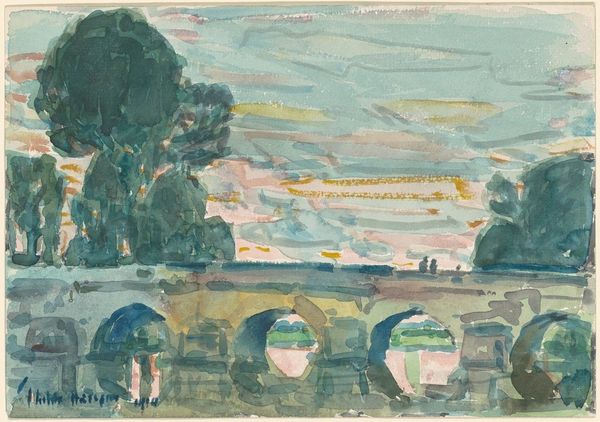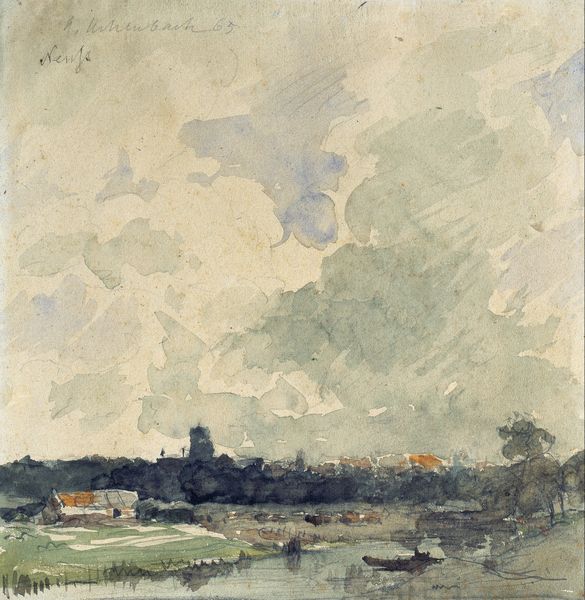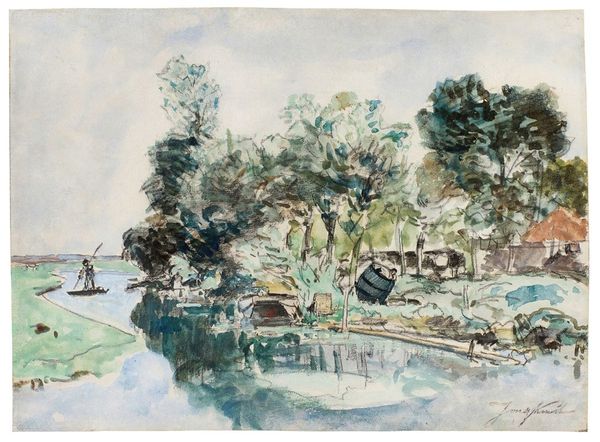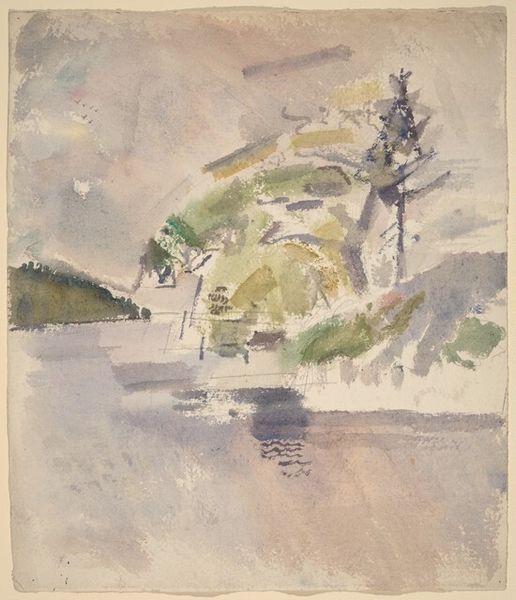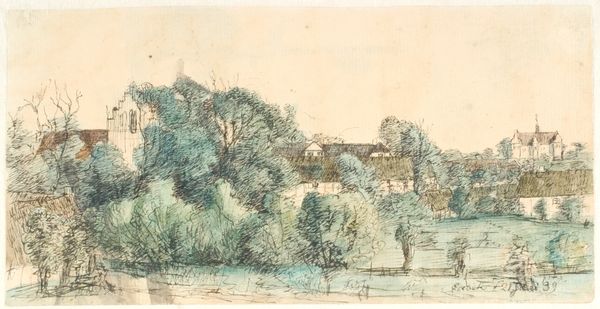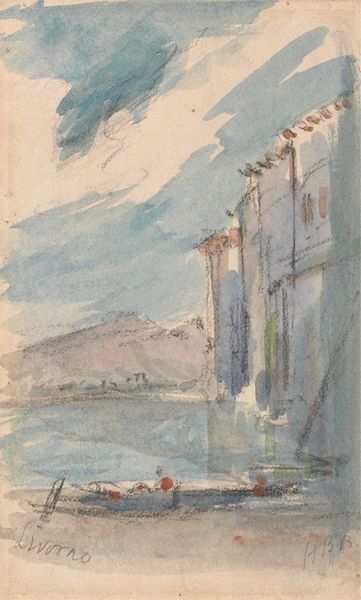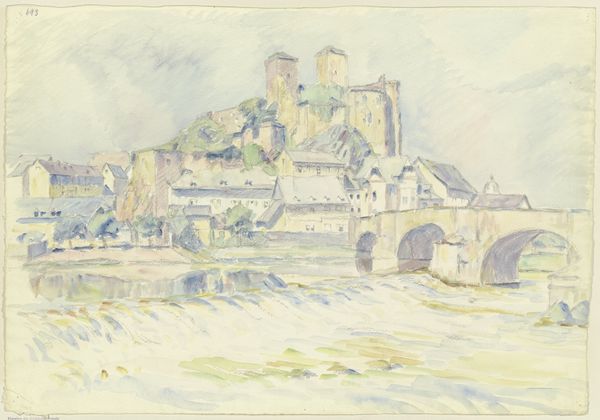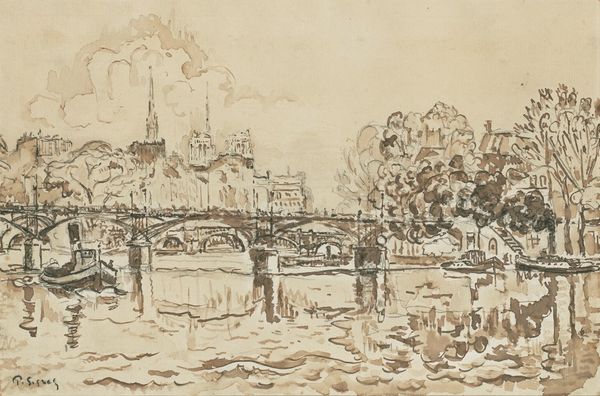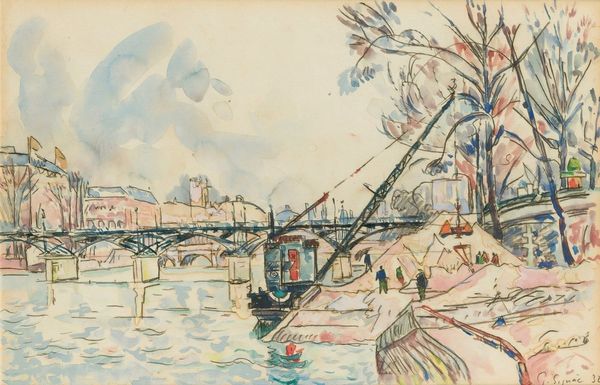
drawing, plein-air, paper, watercolor, pen
#
drawing
#
impressionism
#
plein-air
#
landscape
#
paper
#
oil painting
#
watercolor
#
pen
#
cityscape
#
watercolor
Copyright: Public Domain: Artvee
Curator: Here we have Camille Pissarro's "Pont Corneille à Rouen," a cityscape rendered in watercolor, pen, and drawing techniques on paper. Editor: It's a tranquil scene, isn't it? The muted colors and wispy brushstrokes create this almost dreamlike impression of the city and river. I'm drawn to the reflections on the water – they really capture the essence of light and atmosphere. Curator: Precisely. What's striking about Pissarro's cityscapes is their position within Impressionism and plein-air practices. While capturing everyday life, they underscore the modernization and industrialization occurring at the time. The bridge, in this sense, becomes a symbol of progress and connectivity. Editor: Right, but the hazy quality almost softens that progress, doesn't it? Rather than celebrating industry, it seems more focused on how industrial structures integrate into the landscape. The workers or people aren't prominent; nature, and its relationship with city infrastructure takes precedence. I am particularly intrigued by how gendered roles played out during this period: women were pushed to capture domestic scenes, and Pissarro being a male artist had more acceptance in society, being able to paint an industrial area. Curator: That's a fantastic point. It pushes us to consider whose narratives were being centered during the period, how public spaces were gendered, and what stories were erased or never even had the space to exist within art. Pissarro does capture that, not just literally within the image, but also implicitly, highlighting that contrast. Editor: There is a socio-political relevance about urban growth. You get a sense of how society shifted at that moment through a gaze which seems devoid of direct commentary or judgment; perhaps reflecting a deeper commentary on rapid transformation during this period. What seems evident in the image is the integration and effect that had within the cultural transformation in society. Curator: This watercolor invites reflection. It asks viewers to see how places impact individuals, influence lives, and become woven into the tapestry of time and memory. The social fabric behind infrastructure development at the time in Rouen needs to be questioned through his paintings. Editor: It is also fascinating to think that this image represents a fragment in time—almost fleeting and transient because society keeps evolving, reshaping perspectives through an array of intersectional issues.
Comments
No comments
Be the first to comment and join the conversation on the ultimate creative platform.
